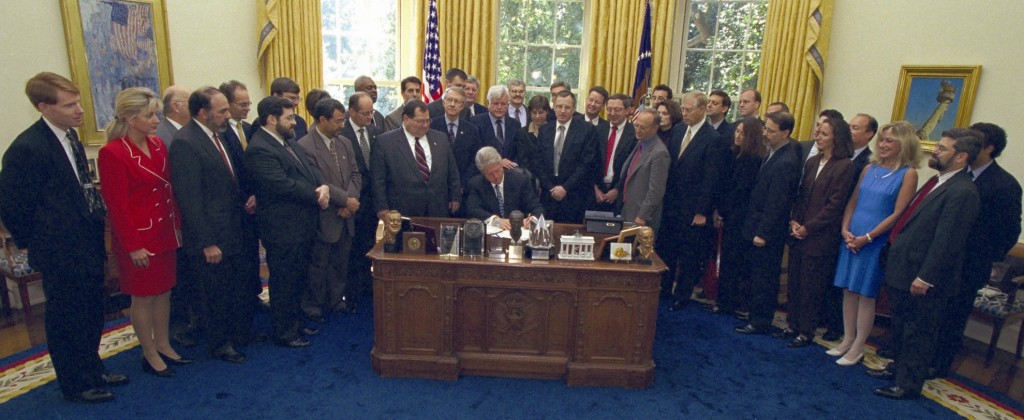On September 22, 2000, President Bill Clinton signed the Religious Land Use and Institutionalized Persons Act (RLUIPA) into law. Here are some important resources on this landmark legislation that you can share with others.
Here’s a post on BJC’s website about the 20th anniversary of RLUIPA in 2020.
The Department of Justice provides a summary of the law’s key provisions in a pdf document. You can also read the complete text of the law on the Department of Justice’s website, as well as pages explaining how RLUIPA relates to zoning laws and institutionalized persons.
Ramirez v. Collier (2021):
BJC joined a brief with religious groups and others to stand up for a prisoner’s right to religious freedom in Ramirez v. Collier. According to the brief, the government hasn’t shown why banning the acts of laying on of hands and praying aloud in this case are necessary for prison security, and RLUIPA protects prisoners’ rights to religious exercise unless there is a compelling reason to impose a restriction. Read more.
Holt v. Hobbs (2015):
In Holt v. Hobbs, an Arkansas prisoner challenged a rule prohibiting him from growing a half-inch beard that he believed his Islamic faith required. The BJC filed a friend-of-the-court brief in the case defending the prisoner’s religious rights, and the Court unanimously ruled in his favor.
–Visit our Holt v. Hobbs page
–Read General Counsel Holly Hollman’s column on the case
More on RLUIPA:
-BJC press release: Landmark law protecting free exercise of religion turns 10 years old (September 2010)
–Click here to read Melissa Rogers’ September 2010 column discussing RLUIPA and how to respond when religious freedom is under attack. The following timeline appeared alongside that column.
Here is a look back at the events that created a need for RLUIPA, how it came to be, and how it has been interpreted by the U.S. Supreme Court:
-April 17, 1990: U.S. Supreme Court hands down a decision in Employment Division v. Smith declaring that the Free Exercise Clause of the First Amendment does not prohibit neutral laws of general applicability that burden religious practice. This ruling contradicts decades of court precedent, creating a need for other laws explicitly protecting religious exercise.
-1993: Congress passes the Religious Freedom Restoration Act, restoring the Free Exercise protections in the United States to the pre-Smith state. The House vote (May 11) was by voice, and there were only 3 votes against the measure in the Senate (October 27).
-November 16, 1993: President Bill Clinton signs the Religious Freedom Restoration Act (RFRA) into law.
-June 25, 1997: The U.S. Supreme Court decides City of Boerne v. Flores, holding that RFRA is unconstitutional as applied to state and local laws and that Congress had exceeded its authority.
-July 27, 2000: On a voice vote, Congress passes the Religious Land Use and Institutionalized Persons Act, providing enhanced free exercise protections in two discrete areas of need: land use laws and persons in government custody (for example, prisoners).
-September 22, 2000: President Bill Clinton signs the Religious Land Use and Institutionalized Persons Act (RLUIPA) into law.
-May 31, 2005: The U.S. Supreme Court’s ruling in Cutter v. Wilkinson declares that Section 3 of RLUIPA — the provision protecting prisoners’ rights — is a permissible accommodation of religion that does not violate the Establishment Clause.





